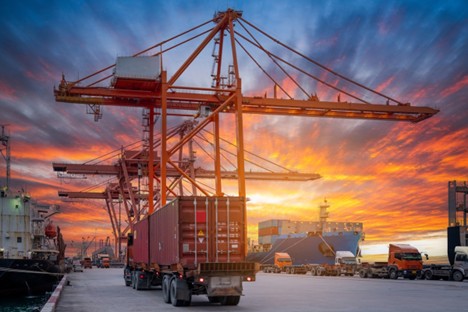Global supply chains have faced relentless disruptions in recent years—from shifting consumer demands and labor shortages to pandemics and geopolitical tensions. These challenges have forced organizations to reevaluate their supply chain strategies. One thing has become clear: flexibility is no longer optional—it is essential.
From Efficiency to Agility
For decades, supply chain optimization focused on efficiency and predictability. But with 87% of companies expecting to restructure their supply chains within five years, volatility is now the new normal. Legacy systems were not designed to cope with constant change, fluctuating costs, or rising customer expectations.
Modern supply chains must now manage unpredictable order volumes, rising return rates, multi-channel fulfilment, and increasing seasonality. The companies that will thrive are those that can adapt quickly to change.
Flexibility as a Core Capability
Supply chain flexibility goes beyond speed and scale. It’s about the ability to shift operations in real time—without major infrastructure overhauls. This includes scaling capacity, pivoting fulfilment strategies, launching new product lines, and operating across multiple sites and networks.
Legacy automation systems, built for stability, often struggle in today’s dynamic environment. Businesses are now prioritizing agility over rigid optimization, seeking supply chains that can bend, adjust, and recover swiftly from disruptions.
Resilience on Demand: The Role of Robotics and AI
AI and robotics are no longer futuristic—they’re embedded in daily warehouse operations. From inventory management to packing, these technologies are transforming fulfilment.
Autonomous Mobile Robots (AMRs) and real-time analytics are at the heart of this shift, enabling adaptability and scalability. Robotic fleets can be reassigned across zones, workflows adjusted in real time, and new SKUs introduced with minimal disruption. This on-demand flexibility enables facilities to handle peaks and respond to unexpected changes seamlessly.
As global conditions remain unpredictable, AMRs provide the agility required to meet growing customer demands without sacrificing throughput or accuracy.
Why Flexible Automation Matters
To stay competitive, businesses need flexible automation—systems that evolve with demand without expensive infrastructure changes. Person-to-goods AMRs, for instance, guide human pickers to items using intelligent routing and dynamic task allocation. Unlike rigid systems, these solutions adapt to shifting demand without disrupting existing workflows.
Flexible automation enhances efficiency while empowering businesses to respond to market shifts, technological trends, and consumer behavior in real time. It’s a blueprint for future-proofing operations.
A Strategic Layer, Not a Full Overhaul
Flexible automation doesn’t require rebuilding from scratch. Increasingly, businesses are integrating AMRs into existing systems, especially where fixed infrastructure still adds value but lacks responsiveness.
Rather than replacing legacy systems, AMRs complement them—handling peak demand, supporting new product launches, and easing congestion. This hybrid approach delivers the best of both worlds: stability where it works, flexibility where it’s needed most.
It’s particularly effective for managing seasonal demand, labor variability, and sudden changes in order profiles—giving organizations the agility to respond fast.
Planning for Uncertainty
With the right technology partner, businesses can scale smarter, adapt faster, and support long-term growth. Across the industry, companies are adopting AI-driven fulfilment systems to improve responsiveness and operational resilience.
Decision-makers are shifting from cost-centric models to flexible, adaptive strategies. This isn’t about replacing people—it’s about empowering them. By integrating automation, workers can focus on higher-value tasks, while machines handle repetitive or volatile processes. The result is collaborative efficiency.
The Future is Flexible
Resilience stems from flexibility. Businesses that invest in AI-enabled, adaptable fulfilment systems are better positioned to navigate change—and capitalize on opportunity.
In a landscape defined by disruption, the winners will be those who can pivot fast. There’s no single roadmap—only constant evolution. Modern supply chains must be built to respond to what comes next.
This isn’t a sprint. It’s a marathon. And in the long run, agility is the most valuable advantage.
Source: Business Reporter UK







































































